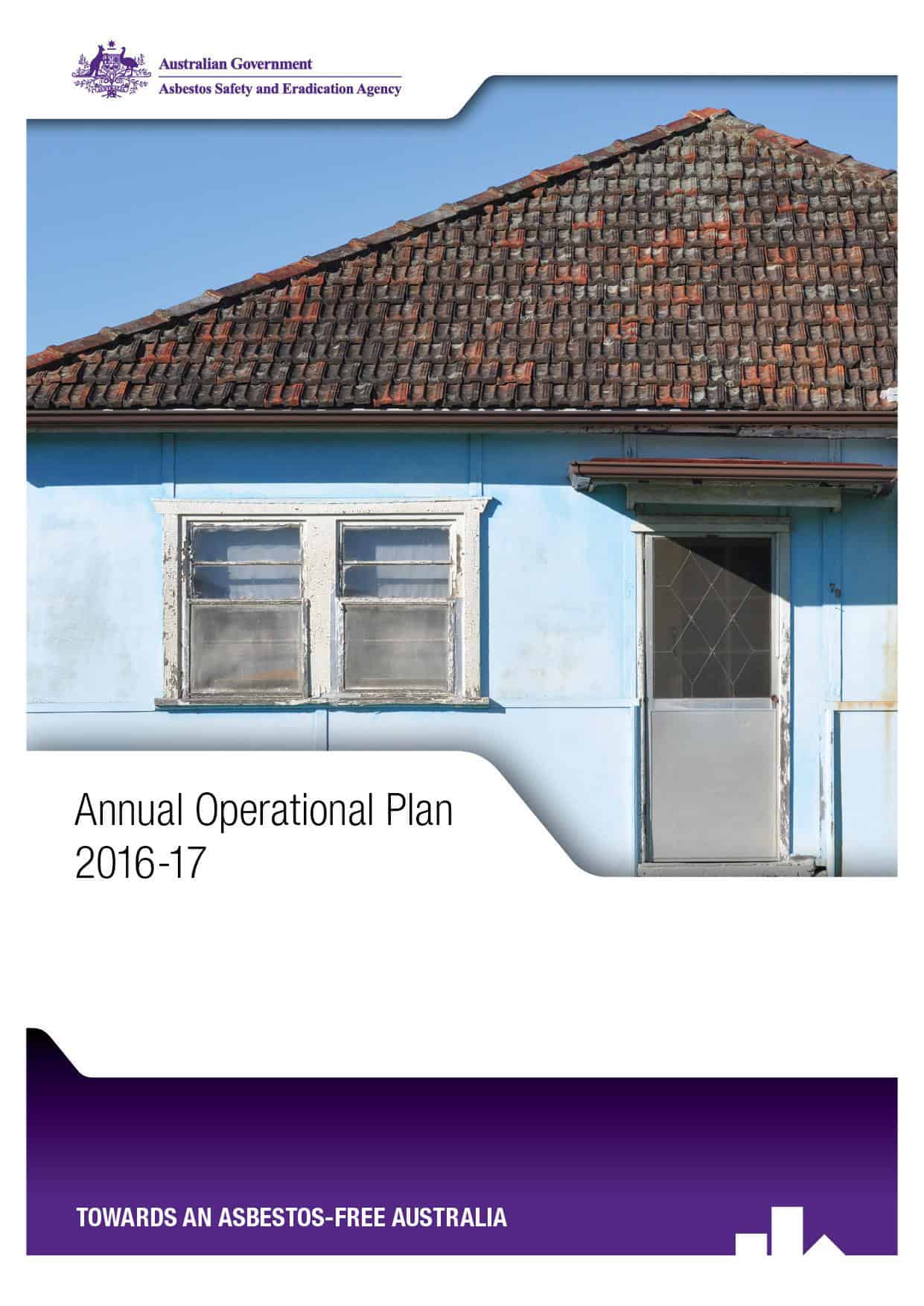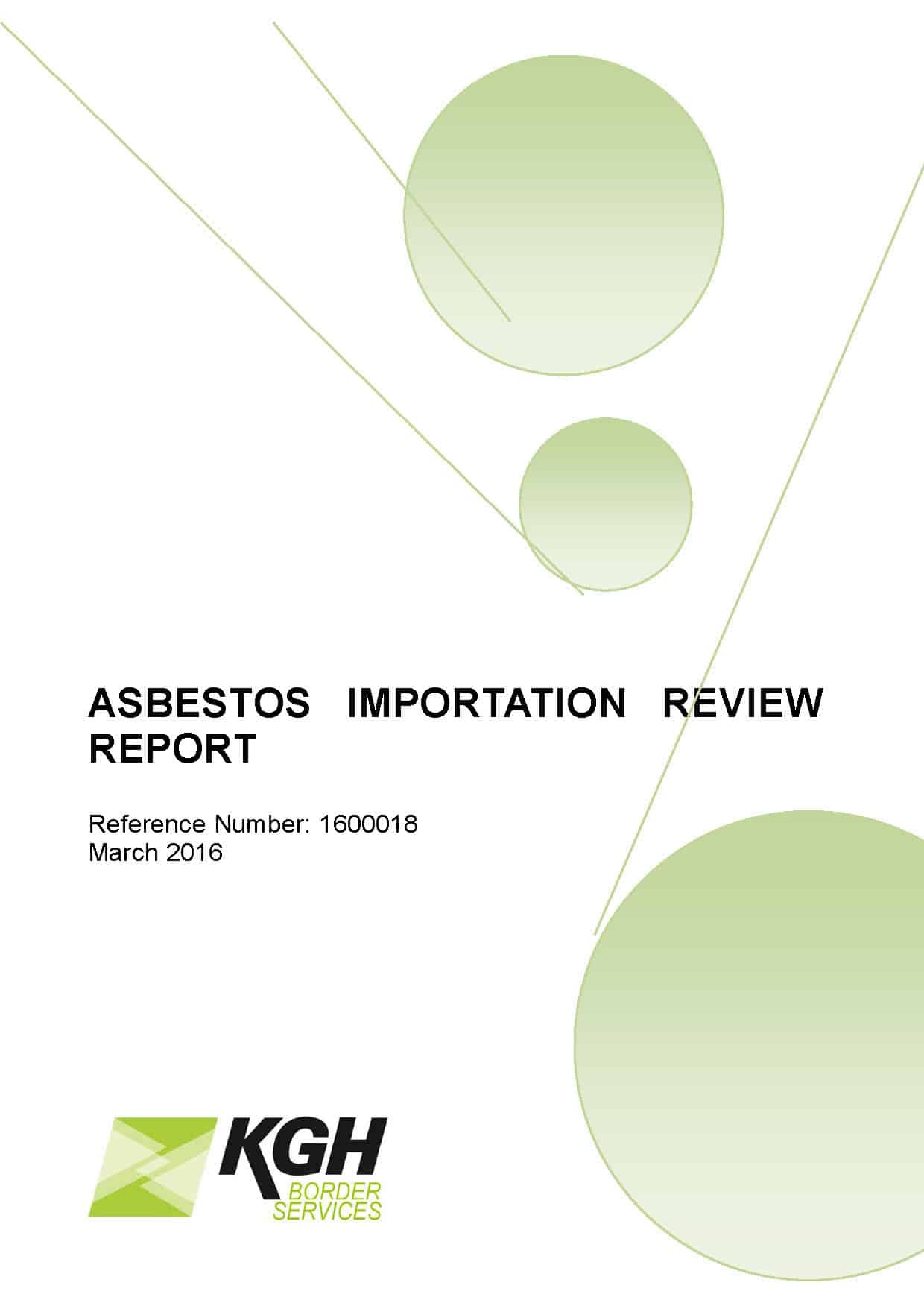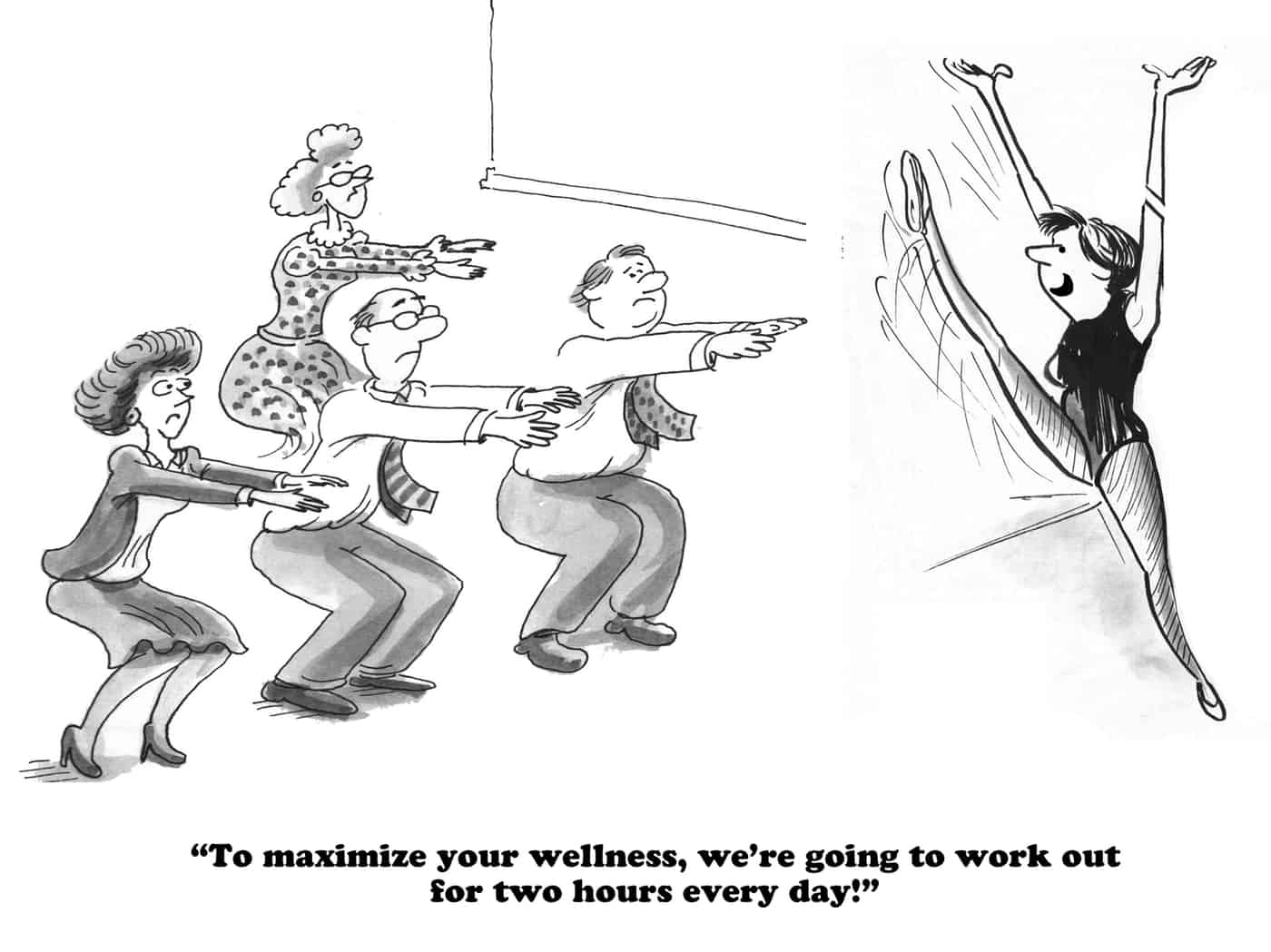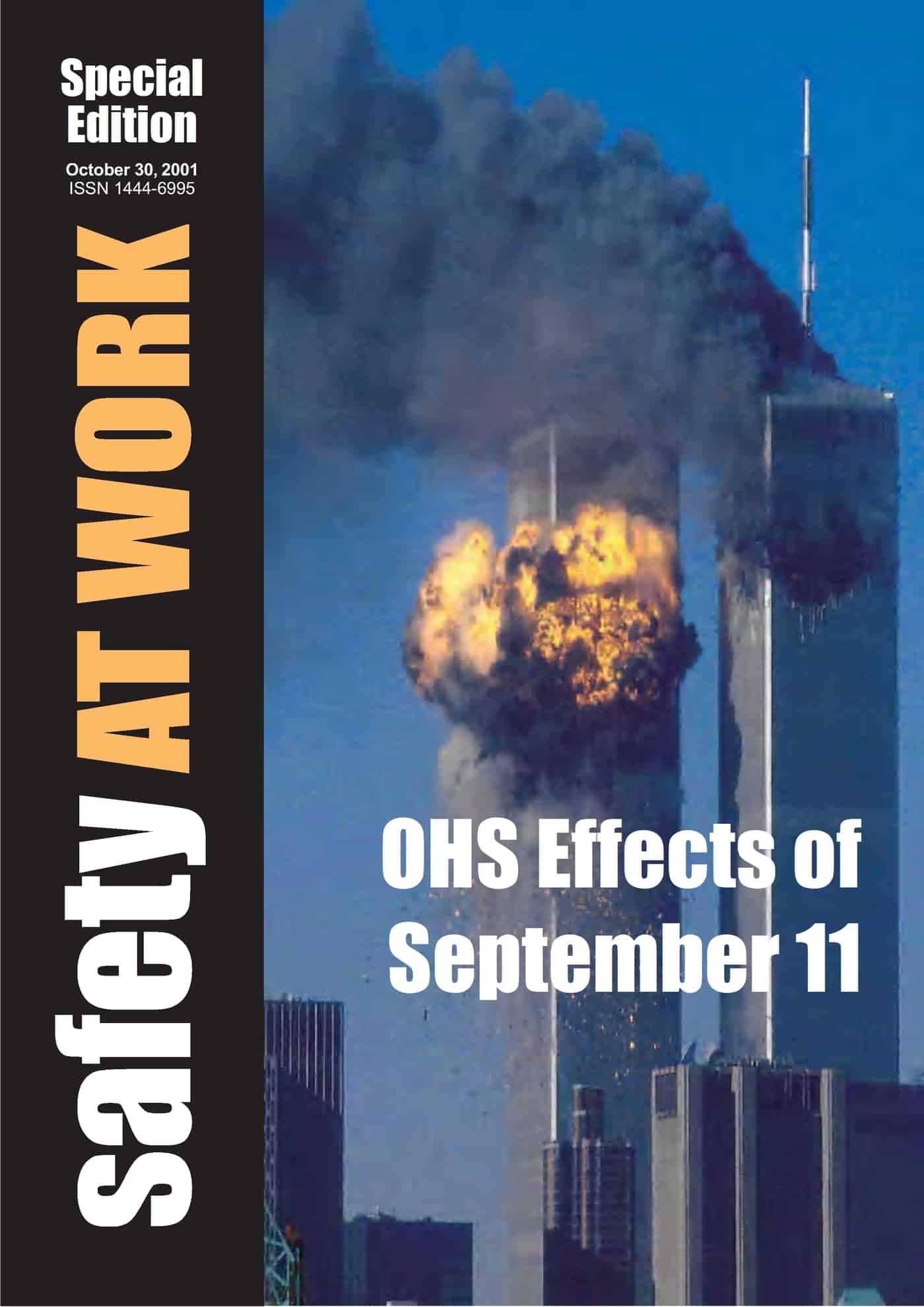On October 7 2016, Victoria’s trade union movement held a Young Worker Conference. The major public statement from that conference was the launch of a survey report called Young Workers Health and Safety Snapshot. The report has received some mainstream press which is not unusual for this type of trade union member survey. Almost twenty…
Category: health
Asbestos presents political opportunities for vision and leadership
Asbestos is not something this blog writes about often, principally because the risk of asbestos-related diseases is well established and the control measures identified. Ideally asbestos should be left in the ground as, no matter in what state it is used, it presents a serious hazard to someone wherever it has been mined or used. But few countries are willing to make this commitment and even if they do asbestos-containing materials (ACM) continue to be imported regardless of any bans in place, as Australia is currently experiencing.
This fundamental occupational health and safety (OHS) and public health issue is not helped when prominent figures utter dangerous misrepresentations. MotherJones has pointed out that in his co-authored 1997 book, The Art of the Comeback, now United States Presidential-hopeful Donald Trump described asbestos as
“the greatest fire-proofing material ever used.”
That asbestos is
“100 percent safe, once applied,” and “got a bad rap.”
The quotes are 19 years old so Trump may have achieved a different perspective on asbestos and it would be good to have someone pose the question, perhaps in the next debate, although he may simply deny he ever said that. (He would be technically right, he never said it, he wrote it)
 Australia does not have a Trump but it does have an Asbestos Safety and Eradication Agency (ASEA) and only last week the Minister for Employment, Senator Michaelia Cash (great name for a politician giving out money), gave the agency an
Australia does not have a Trump but it does have an Asbestos Safety and Eradication Agency (ASEA) and only last week the Minister for Employment, Senator Michaelia Cash (great name for a politician giving out money), gave the agency an
“additional $3.4 million over two years in the 2016-17 Budget”.
This was a timely increase, at least politically, to counter the continued importation of a banned substance as mentioned above. However, the allocation of this money to the ASEA misses the target. ASEA does not control the importation of building products; that is the job of the Australian Border Force.
ASEA released its Annual Operations Plan 2016-17 at the end of September in which it addresses the asbestos importation issue:
“ASEA works with all levels of government to assist in responding to the strategic risks of asbestos in Australia. The agency coordinated the development of a Rapid Response Protocol through the Heads of Workplace Safety Authorities (HWSA) Imported Materials with Asbestos Working Group. The protocol is the first of its kind, enabling government agencies to work cooperatively and efficiently across jurisdiction and portfolio lines when products have been identified as containing asbestos. This allows agencies to work through the practicalities of concerns that such products may cross, or have crossed, state lines.”
This national and cross-agency cooperation is good and required but “the practicalities of concern” is the major barrier to change. Government never seems to have sufficient funds to make a ban as effective as possible or it needs to be. Allowing ACM into Australia, even though the building material contains a government-banned substance, creates costs on public and occupational health but as these costs are further down the supply chain and may not appear for decades, Government considers them to be acceptable. It is highly unlikely that the cost of preventing ACMs at the border would be more expensive than the long-term health costs that the Government will need to pay through public health and hospitals and that employers may need to pay through lost productivity, business disruption and workers’ compensation. (This is another example of why OHS need economists and financial estimators.)
 In February 2016, Minister for Border Protection, Peter Dutton, announced an inquiry into the importation of ACMs, to be conducted by KGH Border Services, a company with which the Minister’s Department has been in a partnership since early 2015. The final report seems to imply that the issue is too difficult to police and that the current process is the best the Government can do, particularly as a large part of the asbestos problem originates in China, Australia’s most lucrative trading partner.
In February 2016, Minister for Border Protection, Peter Dutton, announced an inquiry into the importation of ACMs, to be conducted by KGH Border Services, a company with which the Minister’s Department has been in a partnership since early 2015. The final report seems to imply that the issue is too difficult to police and that the current process is the best the Government can do, particularly as a large part of the asbestos problem originates in China, Australia’s most lucrative trading partner.
“For most businesses involved in international trade, a rational cost/benefit analysis of investment in compliance is not justified by the incentives that government offer to promote voluntary compliance. Despite the critical effect of asbestos exposure to public health and safety, it remains a cheap and effective material for use in a wide range of goods. Asbestos continues to be widely used internationally, and is incorporated in goods manufactured by Australia’s largest trading partners, such as China.”
This paragraph from the KGH report illustrates the tone of the report. Asbestos is cheap and effective and used widely, however it is also deadly. As mentioned above, asbestos and ACM is only cheap to purchase but can have decades long costs that would/should render the cheap purchase a nonsense. That asbestos is effective echoes Trump’s position.
The report also states:
“Due to the differing standards applied to asbestos regulation internationally, it may be inefficient for suppliers that sell to a range of markets, to ensure compliance with the Australia’s strict import prohibition. The Australian prohibition relates to all forms of asbestos, but chrysotile is not internationally recognised as a dangerous form of asbestos. Countries that mine chrysotile maintain that it is safe, and continue to export it to a number of other countries, where it is still widely used in products that supply a range of industries.”
Regardless of what other countries do, Australia’s Department of Health identified the hazard of chrysotile asbestos as early as 1999 and has stated for some time that:
“There may be no safe exposure level for chrysotile, so all exposure should be avoided” and
“If a safer product or process can be substituted for one involving chrysotile, this should be done.”
According to KGH Border Services chrysotile is not internationally recognised as a dangerous form of asbestos. So what? The government that commissioned the KGH report has stated it is dangerous!!??
The KGH report also outlines what is already known and the reason for the existence of the ASEA:
“There is also confusion about policy and regulatory responsibilities across Government in Australia and some ambiguity in the overarching legal framework that establishes Australia’s strict prohibition. The Department of Employment (DoE) has policy responsibility for the legal framework that establishes the border control. The DIBP administers the import and export prohibitions at the border. The Asbestos Safety and Eradication Agency (ASEA) is responsible for administering the import and export permission regime on behalf of the Minister for Employment. The Australian Competition and Consumer Commission (ACCC) and state and territory work, health and safety (WHS) regulators have a role in enforcement of the asbestos prohibition domestically. This cross-over between various Commonwealth and state and territory authorities can confuse the public’s perception of the DIBP’s role in asbestos regulation, and its ability to affect changes to the legal and policy frameworks that establish the prohibition. Clarification of the responsibilities and coordination efforts across Government would reduce this confusion and increase the effectiveness of the Government’s response to asbestos issues.”
If asbestos was not killing Australian workers and their families, it would be funny that overlapping and conflicting responsibilities (a responsibility managed by the Government) “can confuse the public’s perception of the DIBP’s role in asbestos regulation”. The public may not understand the role of the DIBP but it certainly understands the fatal risks associated with asbestos. The calls from the public and the unions for stronger policing of banned substances is less a criticism of the Department of Immigration and Border Protection (DIBP) that it is a criticism of the Government for inaction.
The report also suggests that other levels of Government should be pulling their weight on asbestos management. They should, and they are, but how much easier, cheaper and more productivity their jobs would be if the Federal agencies prevented ACMs entering the country. It just may be possible to eliminate the established asbestos hazards if new asbestos was stopped being imported.
It may also be useful to note that Minister Dutton seems to see the call for controlling asbestos imports as a trade union conspiracy. One could just as well claim that safe asbestos is a Trump conspiracy.
The Australian Government is mismanaging the latest controversies around the importation of asbestos-containing material but to manage it appropriately requires hard questions that this government chooses not face. The deaths associated with asbestos exposures are increasing and are likely to for some decades yet. How many decades, is the choice of this Government. Act now and seriously and fewer people will die, businesses will be more sustainable, health and compensation costs will be less. In fact there may even be more jobs and growth.
Politicians are regularly called on to provide vision. Asbestos seems to be one of those issues where the vision can be readily understood and easily explained. Addressing the issue in a serious way could also be seen as an example of leadership and the basis for a political legacy. And it is not as if asbestos is irreplaceable. Trump may see it as a miracle building material but the combination of new products with safety in design principles should be able to achieve a comparable fire protection level.
Vision and leadership. Where have we heard those words before? Oh yes, EVERYWHERE.
Wellness programs need to fit business management
Recently Corporate Bodies International circulated an annual membership offer (no costs listed in this link) to its Australian market. It said:
“Employees and their families have access over to over 300 live webinars and exercise classes, monthly health videos, posters, online GP, Dietitian and Exercise Physiologist appointments – from anywhere in the world, just to name a few of the inclusions. All of this for little more than the cost of a cup of coffee.”
It is the last line that requires a bit more consideration as no program only costs just what marketers claim.

The CBI offer included a link to a flyer about its Healthy Bodies Subscription which involves $A1,800 per annum for companies with less than 100 staff to about ten times that for a much larger number of staff. The services extend from webinars, posters for toilet walls and newsletters to “GP2U Online GP Access” which involves:
“Diagnosis, immediate prescriptions, specialist referrals and medical certificates, all from the convenience of the office. Designed for critical workers or the executive team, minimising work disruption”.
For an organisation that has no occupational health and safety (OHS), Human Resources or well-being resources, purchasing a package like this may be financially attractive but it can also lock one into a pool of medical advisors that could generate conflicts later on with, for instance, insurers, legal representatives, project partners and others. The provision of “immediate prescriptions” may also be a benefit that needs some further investigation – prescriptions by who? For any medication?
A company needs to decide whether it wants to be in total control of the medical services it may offer, or may need to offer, to its employees and whether subscriptions are sufficiently responsive to meet the fluctuations that occur with any workforce and with the business’ profitability.
It is also worth considering whether employees can choose to opt-out and continue being diagnosed or treated by their own physician. How would such a corporate subscription allow for this worker right? If the worker opts out, would this be seen as being disloyal? Would this reduce the number of workers covered by the subscription and affect the overall cost to the company?
Owning the welfare program for one’s own employees allows a company to shop for the best deal and to tailor the program to match the fluctuations of the company’s needs. Would this cost more than the subscription fees in the table above? Almost certainly, IF the subscription cost was the only cost involved. It is important to look beyond cost to operating costs like management control, good governance and due diligence – to the broader context to which occupational health and safety law is pushing Australian companies. These factors are rarely costed and are frequently overlooked, probably as a consequence of not being measured. It is a shame that such “intangibles” are accepted as part of economic assessments but are dismissed in relation to OHS.
safetyATWORK magazine on 9/11
 SafetyAtWorkBlog originated from the SafetyAtWork magazine, a PDF subscription magazine that ran for a few years. In October 2001 we published a special edition of the magazine focussed on the 9/11 disaster. It has some exclusive articles and other safety content from a range of authors. We have made it available for the first time through this blog to mark the 15th anniversary of the event.
SafetyAtWorkBlog originated from the SafetyAtWork magazine, a PDF subscription magazine that ran for a few years. In October 2001 we published a special edition of the magazine focussed on the 9/11 disaster. It has some exclusive articles and other safety content from a range of authors. We have made it available for the first time through this blog to mark the 15th anniversary of the event.
Citi’s 2015 Safety Spotlight shines light on some OHS areas
[This article from 2015 was previously password-protected and is now available to all] Recently a couple of media outlets referred to a report produced by Citi into workplace safety issues related to the top 100 companies on the Australian stock exchange. The report, “Safety Spotlight: ASX100 Companies & More” (not available online), provides a useful…
Law firm’s report provides important safety contexts
Law firms have been producing newsletters and case summaries for a long time. Ostensibly these are for marketing purposes but occupational health and safety (OHS) professionals have benefited from these potted histories and examinations, even though the perspectives are often limited to the legal precedents. Over the last few years though, law firms have been…
Evidence to support Stand Up, Sit Less, Move More
Office workers need to exercise more. This is one of the simplest occupational health and safety (OHS) statements that can be made. Whether one stands while answering a telephone, walks to a photocopier, have a walking meeting or take the stairs instead of the lift or escalator, you will be healthier by moving. Too often this simple OHS message is confused by sellers of apps, products, furniture and training courses that promise success from a single intervention. The way to avoid this is to look at the research and some recent Australian research into sedentary work is a useful reference in determining workplace safety interventions.
The research “A Cluster RCT to Reduce Office Worker’s Sitting Time: Impact on Activity Outcomes” has been written by a swag of researchers from around Australia and found that a:
“workplace-delivered multicomponent intervention was successful at reducing workplace and overall daily sitting time in both the short- and long- term.”
